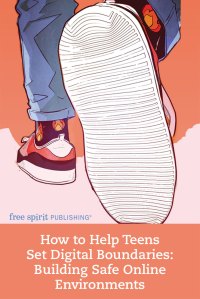by Lauren Fullmer, Ed.D.
When students turn on the TV, they see increasing numbers of deaths and cases of people infected. Walking through the grocery store, they see empty shelves and desolate aisles. Their parents tell them that they can no longer attend basketball practice and that their spring break trip to Disney will most likely be cancelled. And, the buzz around school is that their classes may take place virtually and if they already have gone virtual, it’s not clear when they will get back into their classrooms.
As a result of the coronavirus pandemic, my fifth graders’ worlds are rapidly changing. As teachers, it may feel more comfortable to avoid the “hot button” issue altogether. However, according to a guide developed by the National Association of School Psychologists (NASP) and National Association of School Nurses (NASN), students need information about the potential risk and spread of the disease that is fact-based and age-appropriate. Furthermore, it is important that they have the opportunity to discuss their fears, as well as preventive measures to offer them some sense of control and to reduce their anxiety. Without access to factual information, students often imagine possible outcomes that are “far worse than reality.”
Throughout the year, my students have become adept in the process of researching the facts, as well as all sides of an issue, and then engaging in meaningful dialogue about it. By implementing strategies from the social action pedagogy known as Students Taking Action Together (STAT), they have respectfully expressed and listened to the perspectives of others on historical issues like the Holocaust and Revolutionary War, as well as current – often controversial – events, like the most recent outbreak of the coronavirus.
While any of the STAT strategies can be applied to facilitate respectful debate and dialogue about the coronavirus, I decided to implement Yes-No-Maybe. With this particular strategy, students are given the opportunity to answer “yes,” “no,” or “maybe” and explain their stance in response to several statements about a current or historical event.
Facilitating Meaningful Dialogue
To integrate literacy and to provide my students with factual information, they read several articles from a text set that I had created, related to the coronavirus. The articles addressed the differences between viruses and the flu, the impact of the coronavirus on the economy, U.S. schools’ responses to the pandemic, and misguided fears about COVID-19 and Asian Americans. As they were reading, they applied note-taking strategies that we had learned earlier in the week, compiling their notes in a collaborative Google Doc.
Students then were given the opportunity to weigh in with their Yes-No-Maybe opinions on several statements, including:
- If you’re staying away from people of a specific background, you’re just being cautious.
- You should not engage in your normal daily activities to prevent the spread of the coronavirus.
- Adults are right not to discuss the coronavirus with kids.
Students moved to corners of the room corresponding to their Yes-No-Maybe views and discussed the reasons for their opinions in groups of three or four. As I circulated the room to listen in on the small group discussions, students passionately discussed the injustices of avoiding individuals of Asian American descent, just because COVID-19 originated in Wuhan, China. This broached a conversation about discrimination. One student stated that, “It’s unfair to not go near someone because of what they look like. Anyone can get the coronavirus, regardless of what you look like.”
As we moved onto the next statement and students regrouped, several students in the class got involved in a respectful debate about after-school activities. In sharing out to the whole class, one boy stated, “While my mom let me go to basketball, my friend’s mom didn’t want him to go. I get why she wanted him to stay home because there might be more germs with so many people getting together.” Clearly, using the STAT framework allowed the boys to collaboratively communicate their perspectives to one another.
Tips for Implementation
Given that headlines stories about coronavirus are not going away any time soon, our students need to talk about it. Here are some tips to help you facilitate meaningful dialogue:
- Get informed – Make sure that you educate yourself from credible sources like the World Health Organization (WHO) and Center for Disease Control (CDC).
- Assess your students’ knowledge and experiences – Figure out what information and misinformation they have seen or heard on television, online, and from their parents and friends.
- Provide students with factual, honest, age-appropriate information and stories.
- Create a safe and respectful environment for students to discuss their views.
- Acknowledge students’ concerns and make them aware of what they can control, including preventive measures they can take to minimize the risk of infection.
- Model and encourage respectful listening and perspective taking.
- Confront issues of prejudice surrounding the disease.
Lauren Fullmer, Ed.D., is an educator with Summit, NJ Public Schools and the Academy for SEL in Schools.




